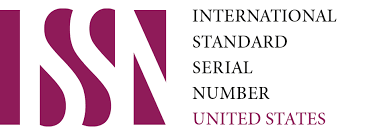Yield curve and its impact on predicting economic growth in Uzbekistan
Keywords:
yield curve, treasury bonds, economic growth, Repo operationsAbstract
One of the most important instruments of monetary policy of the state to regulate the country's economy is the open market operations of the Central Bank. Various mechanisms are used to assess the success of these operations. One of these mechanisms is the yield curve. The country influences its monetary policy through the sale and purchase of securities in domestic and foreign markets. The rate of return on bonds issued by the Central Bank is formed as a result of supply and demand for it. Through this change in the level of profitability, international investors will be able to conclude about the current and future state of the country. This article constructs the equation of the yield curve on government securities and thus analyzes the current state of the REPO operations market.
References
Hakimov, H. (2020). Davlat qimmatli qog‘ozlari bo‘yicha daromadlilik egri chizig‘i va uning shakllanishi. Архив научных исследований, 1(11). https://tsue.scienceweb.uz/index.php/archive/article/view/1530
Jessica James & Nick Webber (2001). Interest Rate Modelling. John Wiley & Sons. ISBN 978-0-471-97523-6
The zero-coupon yield curve in the GKO-OFZ market. G.Gambarov A.Balabushkin I.Shevchuk A.Nikitin Bank of Russia. 2006
N. Anderson, F. Breedon, M. Deacon, A. Derry, and M. Murphy (1996). Estimating and Interpreting the Yield Curve. John Wiley & Sons. ISBN 978-0-471-96207-6.Paul F. Cwik (2005) "The Inverted Yield Curve and the Economic Downturn" New Perspectives on Political Economy, Volume 1, Number 1, 2005, pp. 1–37.
Hagan, P.; West, G. (June 2006). "Interpolation Methods for Curve Construction". Applied Mathematical Finance. 13 (2): 89–129. CiteSeerX 10.1.1.529.9594. https://doi:10.1080/13504860500396032.
Rise in Rates Jolts Markets – Fed's Effort to Revive Economy Is Complicated by Fresh Jump in Borrowing Costs author = Liz Rappaport. Wall Street Journal. May 28, 2009. p. A.1
J H M Darbyshire (2017). Pricing and Trading Interest Rate Derivatives (2nd ed. 2017 ed.). Aitch and Dee Ltd. ISBN 978-0995455528.
Leif B.G. Andersen & Vladimir V. Piterbarg (2010). Interest Rate Modeling. Atlantic Financial Press. ISBN 978-0-9844221-0-4.
Riccardo Rebonato (1998). Interest-Rate Option Models. John Wiley & Sons. ISBN 978-0-471-97958-6.
Nicholas Dunbar (2000). Inventing Money. John Wiley & Sons. ISBN 978-0-471-89999-0.
Andrew J.G. Cairns (2004). Interest Rate Models – An Introduction. Princeton University Press. ISBN 978-0-691-11894-9.
John C. Hull (1989). Options, Futures and Other Derivatives. Prentice-Hall. ISBN 978-0-13-015822-2.
Damiano Brigo; Fabio Mercurio (2001). Interest Rate Models - Theory and Practice. Springer. ISBN 978-3-540-41772-9.
Donald R. van Deventer; Kenji Imai; Mark Mesler (2004). Advanced Financial Risk Management, An Integrated Approach to Credit Risk and Interest Rate Risk Management. John Wiley & Sons. ISBN 978-0-470-82126-8.
https://www.cbu.uz - Official website of the Central Bank of the Republic of Uzbekistan
https://www.stat.uz - Official site of the State Statistics Committee of the Republic of Uzbekistan
https://www.lex.uz – Uzbekistan National Legislative Base
https://www.mf.uz - Official site of the Ministry of Finance of the Republic of Uzbekistan
Downloads
Published
Issue
Section
License

This work is licensed under a Creative Commons Attribution-NonCommercial 4.0 International License.
User Rights
Under the Creative Commons Attribution-NonCommercial 4.0 International (CC-BY-NC), the author (s) and users are free to share (copy, distribute and transmit the contribution).
Rights of Authors
Authors retain the following rights:
1. Copyright and other proprietary rights relating to the article, such as patent rights,
2. the right to use the substance of the article in future works, including lectures and books,
3. the right to reproduce the article for own purposes, provided the copies are not offered for sale,
4. the right to self-archive the article.













